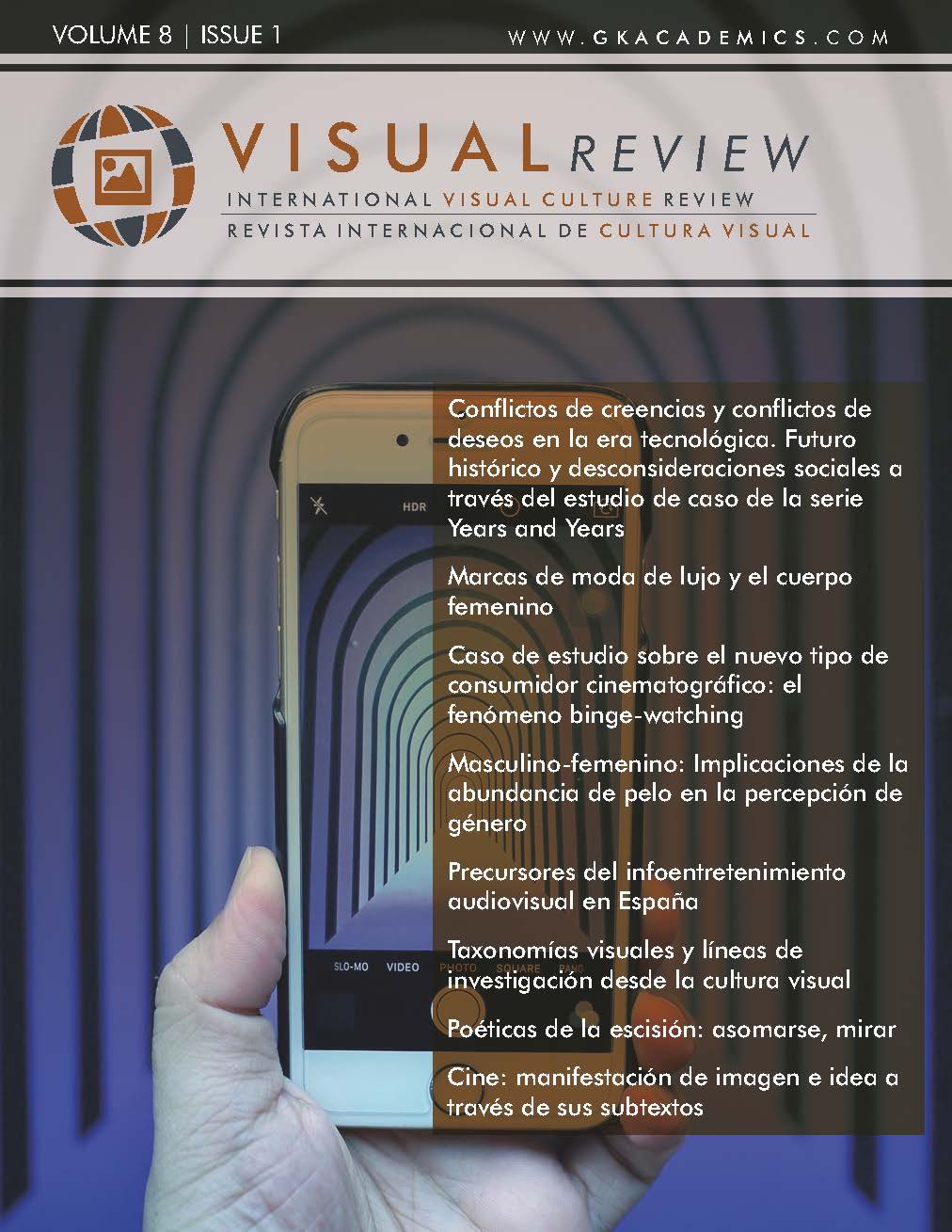Masculine-feminine: Implications of the abundance of hair on gender perception
DOI:
https://doi.org/10.37467/gka-revvisual.v8.2486Keywords:
Hair, Bearded woman, Monster, Gender, Sexuality, Hirsutism, HypertrichosisAbstract
Hair is an element that has been present in human evolution since time immemorial. The excessive growth of hair on the body starts from a historical reality, since they are the result of real diseases: hypertrichosis and hirsutism. Taking as a starting point the image of the bearded women, we will address the stereotypes about female sexuality, the ideals of beauty and the definition of gender that are taken up in the creation of contemporary works of art in which the absence or presence of hair and its body location is a decisive element.
Downloads
Global Statistics ℹ️
|
556
Views
|
289
Downloads
|
|
845
Total
|
|
References
Asz, D., Salas, J., Beirana, A. y Arenas, R. (2011). "Hipertricosis: sus causas, formas clínicas y manejo/Hypertrichosis: Etiology, clinical forms and management". Dermatología Cosmética, Médica y Quirúrgica, 2011, 9 (1), 35-45. [en línea] <https://www.medigraphic.com/pdfs/cosmetica/dcm-2011/dcm111i.pdf> [ consulta: 10 de junio de 2020]
Butler, J. (1990). El género en disputa (ed. 2018). Barcelona: Paidós.
Cendán, S. (2013). "Todo tiene que ver con los monstruos". Art. es international-contemporary-art, nº53-54, 78-86. Madrid: Salamir Creación y Arte, S.L. [en línea] < http://www.marinanunez.net/textos/susana-cendan-todo-tiene-que-ver-con-los-monstruos/> [Consulta: 25 de junio de 2019)
Cirlot, V. (1990). "La estética de lo monstruoso en la Edad Media". Revista de literatura medieval, nº. 2, 175-182. Universidad de Alcalá de Henares: Servicio de Publicaciones. [en línea] <https://ebuah.uah.es/dspace/handle/10017/5088> [Consulta: 20 de junio de 2019]
Dalí, S. (1994). ¿Por qué se ataca a la gioconda? Madrid: Siruela, D.L.,
Gale Moyano, M. J. (2016). Mujeres barbudas: cuerpos singulares. Bellaterra Ediciones.
Goicoetxea, A. (2008). El pelo en la cultura y la antropología. Madrid: Ediciones Pastor.
Kappler, C. (1986). Monstruos, demonios y maravillas a fines de la edad media. Madrid: Akal, D.L.
Mayayo, P. (2007). Historias de mujeres, historias del arte. (2º ed.). Madrid: Cátedra.
Moros, M. (2003). Seres extraordinarios. Anomalías, deformidades y rarezas humanas. Madrid: EDAF, S.A.
Núñez, M. (2017). La mujer barbuda. Exposición.p.1. [en línea] <http://pilarserra.com/wp-content/uploads/2017/05/MARINANU%C3%91EZ-notaprensa.pdf > [Consulta: 15 de junio de 2019]
Orsanic, L. (2015). "Mujeres Velludas. La imagen de la puella pilosa como signo de monstruosidad femenina en fuentes medievales y renacentistas, y su proyección en los siglos posteriores". Lemir 19, 217-242. Universidad Católica Argentina. [en línea] <http://parnaseo.uv.es/Lemir/Revista/Revista19/09_Orsanic_Lucia.pdf>[Consulta: 6 de Mayo de 2019]
Pedraza, P. (2009). Venus barbuda y el eslabón perdido. Madrid: Siruela, D.L.
Pérez Sánchez, A. (1986). "Monstruos, enanos y bufones". En Monstruos, enanos y bufones en la corte de los Austrias. [cat. expo. Museo del Prado, Madrid]. Madrid: Amigos del Museo del Prado. [en línea] https://www.museodelprado.es/aprende/biblioteca/biblioteca-digital/fondo/monstruos-enanos-y-bufones-en-la-corte-de-los/a5b16cc6-0d00-4238-9a61-f60a27aa4852 [Consulta: 20 Julio de 2019]
Zapperi, R. (2006). El salvaje gentilhombre de Tenerife. La singular historia de Pedro González y sus hijos. Tenerife: Verena Zech.
Downloads
Published
How to Cite
Issue
Section
License
Those authors who publish in this journal accept the following terms:
-
Authors retain copyright.
-
Authors transfer to the journal the right of first publication. The journal also owns the publishing rights.
-
All published contents are governed by an Attribution-NoDerivatives 4.0 International License.
Access the informative version and legal text of the license. By virtue of this, third parties are allowed to use what is published as long as they mention the authorship of the work and the first publication in this journal. If you transform the material, you may not distribute the modified work. -
Authors may make other independent and additional contractual arrangements for non-exclusive distribution of the version of the article published in this journal (e.g., inclusion in an institutional repository or publication in a book) as long as they clearly indicate that the work was first published in this journal.
- Authors are allowed and recommended to publish their work on the Internet (for example on institutional and personal websites), following the publication of, and referencing the journal, as this could lead to constructive exchanges and a more extensive and quick circulation of published works (see The Effect of Open Access).













